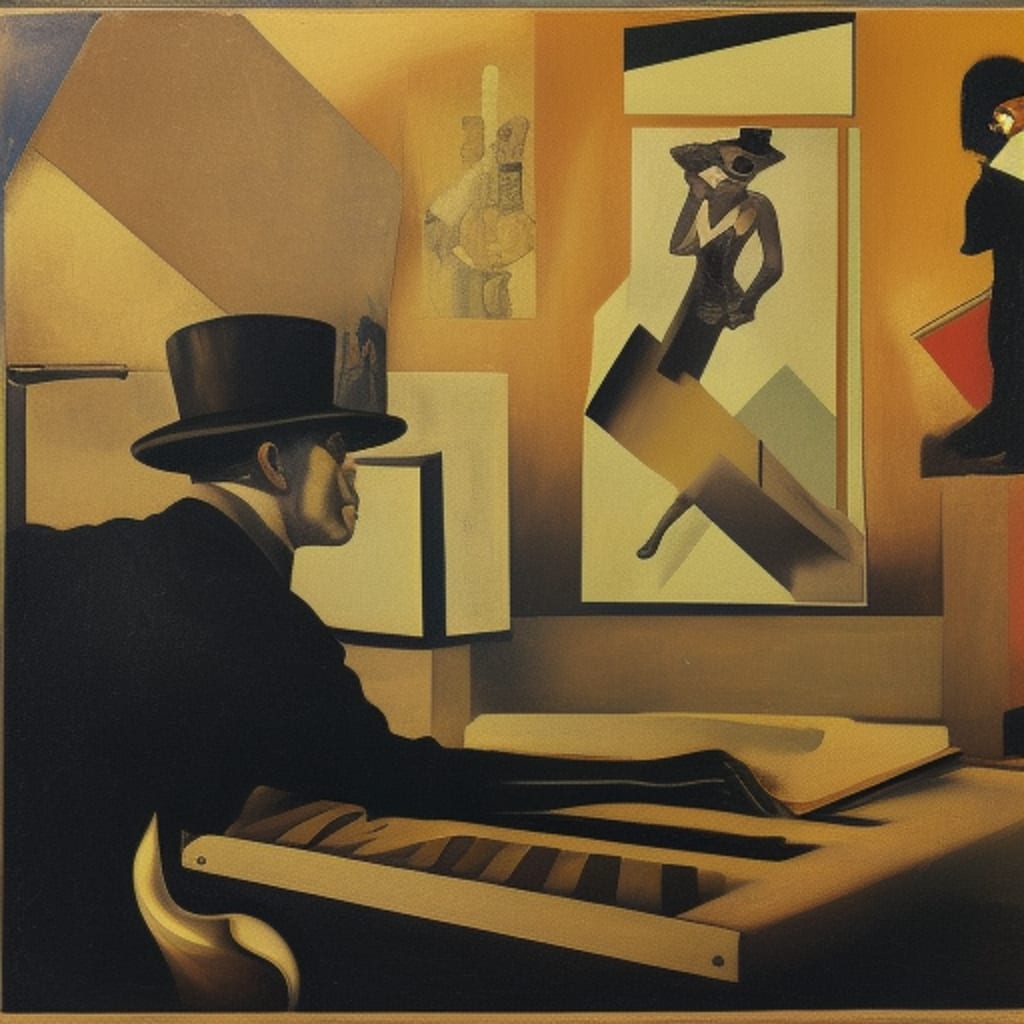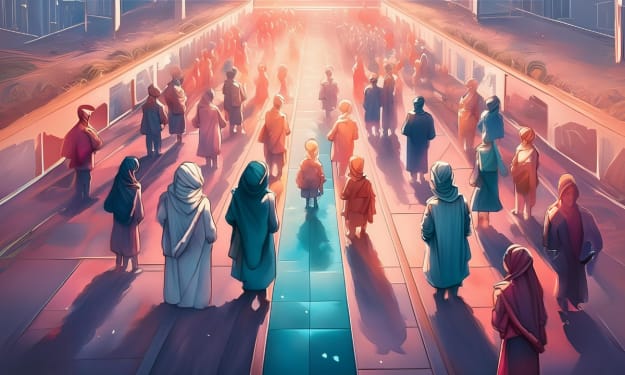The Dadaist's Canvas
Embracing Chaos and Challenging Conventions

A young artist named Clara used to reside in a small bohemian hamlet tucked away in the chaos of post-World War I Europe. Clara had been profoundly affected by the war, and as a result, she had lost faith in society and its norms. She came across a community of like-minded people who identified as Dadaists while looking for comfort and a way to express her emotions.
Clara was immediately drawn to the Dadaists' attitude of disobedience and artistic independence. She made the decision to embrace the turmoil and join their ranks after being moved by their audacity to defy social conventions. They worked together to undermine the existing system and transform the art world.
In the heart of the town stood an abandoned warehouse, a vast space that would become the canvas for their artistic revolution. Clara and her fellow Dadaists transformed the dilapidated walls into a vibrant, ever-evolving masterpiece. They painted with wild strokes, using bold colors and unconventional materials. The canvas became a reflection of their inner turmoil, a visual manifestation of their desire to break free from the constraints of traditional art.
Clara's art took on a life of its own. She experimented with collage, combining fragments of old newspapers and torn photographs, creating thought-provoking compositions that defied logic and reason. Her work spoke volumes about the absurdity of war, the hypocrisy of society, and the limitations of human perception.
The Dadaists organized performances that were a sensory explosion, designed to shock and challenge the audience. Clara found herself at the center of these spectacles, reciting nonsensical poetry and engaging in spontaneous acts of rebellion. The audience was left bewildered, unable to comprehend the meaning behind the madness.
However, not everyone appreciated the Dadaists' radical approach. The art establishment, entrenched in tradition, dismissed their work as mere gimmickry and refused to accept them as serious artists. Critics scoffed at their audacity, labeling their art as meaningless and chaotic.
Undeterred by the rejection, Clara and her comrades continued their artistic crusade. They printed and distributed manifestos, proclaiming the death of art and the birth of a new era of creativity. They organized underground exhibitions, inviting those with open minds to witness the birth of a revolution.
But as the Dadaists gained momentum, their movement attracted the attention of those who sought to maintain the status quo. Authorities viewed them as subversive troublemakers, disrupting the order they sought to preserve. Police raided their gatherings, confiscating their artwork and dismantling their exhibitions.
Amidst the chaos and persecution, Clara found solace in the support of her fellow Dadaists. Their camaraderie and shared vision kept her going even in the face of adversity. They reminded one another of the importance of their mission: to challenge the established order, to expose the hypocrisy of society, and to give voice to the anguish that lay dormant within their souls.
Over time, the echoes of Dadaism reverberated beyond the confines of their small town. Artists in other cities were inspired by their boldness and began to embrace the spirit of rebellion. Dadaism became a beacon of hope for those who longed to break free from the chains of convention and to express their innermost emotions without restraint.
As the years passed, Dadaism's influence extended far and wide, leaving an indelible mark on the art world. Clara's works, once dismissed as chaotic and meaningless, found their place in prestigious galleries and museums. Scholars and critics began to recognize the profound impact of Dadaism, as it paved the way for new artistic movements and experimental forms of expression.
Clara looked back at her journey with pride. She had been part of a movement that challenged the very fabric of society, that dared to defy reason and embrace chaos. Dadaism had given her a voice, a canvas upon which she could paint her innermost thoughts and emotions.
And as she stood in front of one of her earlier creations, now displayed in a renowned gallery, Clara smiled. She knew that her brushstrokes, once seen as rebellious and nonsensical, had left an indelible mark on the world of art—a mark that would forever remind future generations of the power of embracing chaos and challenging conventions.
In that moment, Clara realized that Dadaism had not only shaped her as an artist but had also shaped the world around her. And with renewed vigor, she continued to push the boundaries of creativity, forever grateful for the journey she had embarked upon with the Dadaists, forever grateful for the freedom to embrace chaos on her canvas.
About the Creator
Enjoyed the story? Support the Creator.
Subscribe for free to receive all their stories in your feed. You could also pledge your support or give them a one-off tip, letting them know you appreciate their work.





Comments
There are no comments for this story
Be the first to respond and start the conversation.